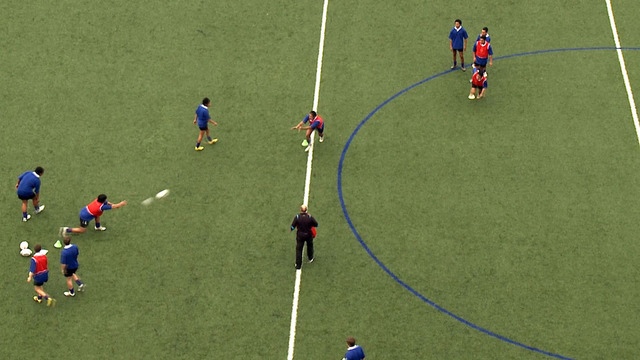How to use the ‘double pump’ to unlock the Press defence
In his session on ’Defensive Structures’, England second row Courtney Lawes outlines the principles by which Press defence lives – and dies. He indicates that the defensive line-speed is led out initially by the “C” defender, the second defender out from Guard at the side of the breakdown.
That defender typically aligns on the likely first receiver on the attacking side.
“C” leads the line every time, he flies at the 10 (first receiver) as quick as he can… But he cannot leave until the ball has been passed to the 10, or he will leave a big gap inside him.
This is in a nutshell, the most basic foundation of a Press defence. The defender opposite each of the first two probable receivers (it would likely be the “E” or fourth defender opposite second receiver) flies out as quickly as he can to close the distributor down, make an offensive tackle behind the advantage line, and if possible force a fumble or interception.
The crucial inhibitor (as Courtney points out) is that the key defenders at “C” and “E” cannot leave until the ball has actually left the hands of the receiver inside them – or they will create a hole for the offence to exploit.
So attack and defence becomes a matter of razor-sharp timing, with the key defenders trying to time their rush or potential spot-tackle on the next receiver just after the pass has been released, and the receivers attempting throw the defenders’ timing off.
One of the passing techniques which is evolving quickly in response to this method of defence is the ‘double pump’ or ‘pump fake’. The term is coined from American Football, where a quarterback will pump his arm out and fake a pass in order to draw movement from the defensive backfield in a particular direction, or freeze the defenders in their tracks for one crucial moment.
So quarterbacks will either pump their arm, or jerk their shoulders to trigger a movement from defenders – the movement they really want to make in order to anticipate attacking intent and make a break on the ball.
Number 10’s in both hemispheres, such as Owen Farrell for Saracens and England, and Quade Cooper for Queensland and the Wallabies, have begun to incorporate the ‘double pump’ as a regular feature of their attacking repertoire.
There were a couple of highlight uses of the tactic by Quade Cooper in the recent Super Rugby game between the Reds and the Western Force. The first example resulted in the Reds’ first try of the match:
The shot comes from behind the posts. Cooper has a runner coming on a short angle in Eto Nabuli, so his first task is to get the defenders in front of him (the Force numbers 9 and 10) to ‘freeze in their tracks’ on Nabuli’s run. He achieves this aim by allowing Nabuli to hit the line, to the point where he is level with Cooper as the pump fake is executed.
The pump fake also has the effect that Courtney Lawes observes in his training session. It throws the timing of the key defender on the outside (Force #15 Marcel Brache) off completely.


The pump fake allows to Brache to move a little further upfield in the first frame, and Reds number 12 Duncan Paia’aua to break beyond him in the second. So the ploy encourages the defender to do what he believes he wants to do, and what he has been coached to do – only to leave the fatal hole underneath him that Lawes notes in his training session. His momentum advances him too far beyond the ball to block the pass.
The second example occurred only four minutes later, but this time well outside the Force 22 metre ‘red zone’:
As Quade Cooper receives the ball, the Force defender in the black hat moves up opposite George Smith (the Reds’ likely second receiver) until he is approximately level with Cooper:

If Cooper makes the pass at this juncture, he will probably lead the defender straight into Smith on terms favourable to the defence.
But momentum cannot easily be stopped once it has started, and the defender is unable to change direction, and back off if Cooper delays the pass. He delays it by authoring another ‘pump fake’, one which takes the defender further ahead of the ball and out the line of the pass between Cooper and Smith:

The defence’s doctrine has been used against them. The wish to fire out at the receiver, anticipate the pass and crush the man opposite has been confounded by a change in timing on the part of the attack, turning a strength into a weakness.
Summary The variations of the short kicking game – as examined in my last two articles – are effective ways of dislocating a defence which uses line-speed and aggression as its main weapon of choice.
The use of the pump-fake or double pump is another method of dislocating the Press defence, but on this occasion by keeping ball in hand. It is still in the process of evolution, although two of the best outside-halves in the world (Owen Farrell and Quade Cooper) have adopted it as a main weapon in their armoury.
It will be fascinating to see how attack combats defence in an upcoming series (between the British & Irish Lions and All Blacks) which is likely to feature hard-rushing D on both sides!
It could be a contest that decides the fate of that series.
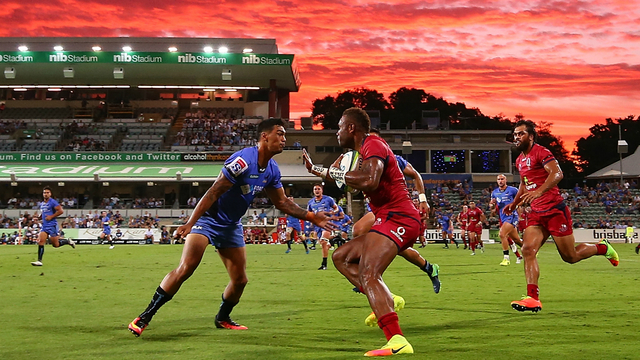




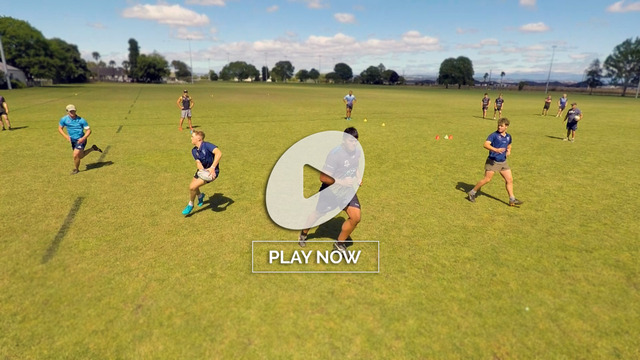




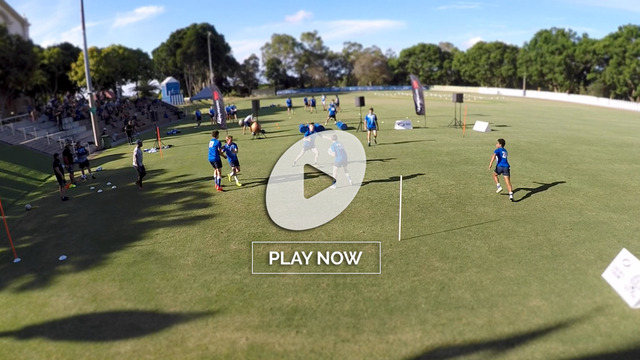
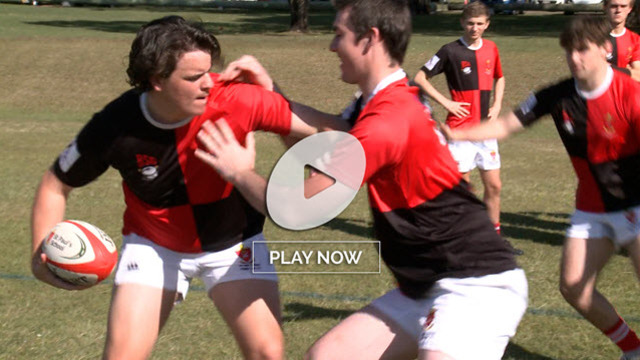
.jpg)

.jpg)




